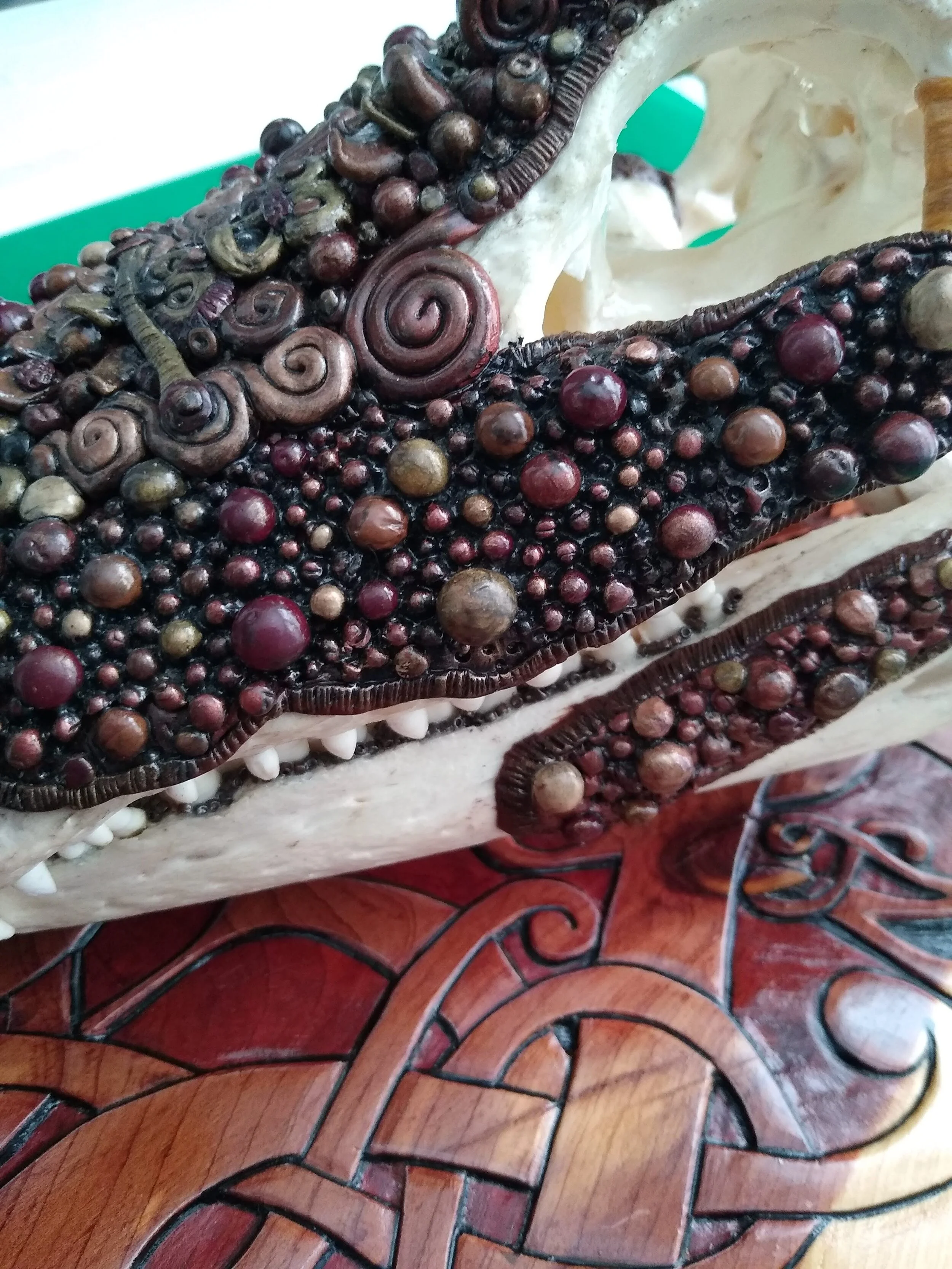
Nìdhöggr:Ragnarok
The World Tree, Yggdrasil, is a symbol of the structure of the entire universe, which is at once illimitable in extent and closely conjoined. It is in a constant state of decay and rebirth. The warfare of Chaos against Order is represented by the dragon Nídhöggr, and the continual flux and transitory nature of created things find a symbol in the ever-perishing and regenerating tree.
"…Yggdrasil endures hardship, more than men know. A stag bites from above and its sides rot; From below Nídhöggr gnaws…"
Yggdrasil spreads its branches abroad over the whole world. It has three roots and, deep within the earth, beside the root in the misty netherworld of Niflheim, there is a lake, Hvergelmir, from which all the waters in the world flow. The shore of this lake is called Náströnd ("the Strand of Corpses"), upon which lies a great hall filled with serpents - there lurks the great dark dragon Nídhöggr ("Malice Striker").
Each day a squirrel, Ratatoskr, runs the length of Yggdrasil passing insults and slanderous gossip to and from the dragon below and the giant eagle Hraesvelgr in the branches above, hoping to stir up trouble between the two and thus hasten Ragnarok. He does this because, well, squirrels gonna squirrel.
"Ratatoskr who with nimble skill, sports thro' the ash of Yggdrasil,
the mandates of the Eagle brings, that plumes aloft his spreading wings,
to where Nìdhöggr far beneath, coils in many a shining wreath."
At times, Nídhöggr roams the shoreline, consuming the corpses of the wicked - murderers, adulterers, and oath-breakers - those who had committed the worst possible crimes in Norse society. Most often Nídhöggr is found gnawing at the root of Yggdrasil, threatening to destroy it and bring about Ragnarok, the end of the world. He represents the primal regenerative chaos that is greater than the power of fate and the gods.
For the most part, though, Nídhöggr remains relatively stationary until Ragnarok begins. It is at this point he will burst forth from beneath Yggdrasil and take flight into the world. Both Nídhöggr and Yggdrasil, Chaos and Order, survive Ragnarok, though most all else falls.
*UPDATE: This piece was shown at the Waterfyre Gallery in Blue Ridge, Georgia, and has now found a permanent home. A new piece featuring Jörmungandr is currently in the works, so watch for updates on that project.

Nidhoggr: Ragnarok (Wood, Bone, Metal, Leather, Poly Clay)

Nidhoggr (dragon detail)

Ratatoskr (detail)

Nidhoggr (top detail)

Nidhoggr (side and carving detail)

Nidhoggr (base detail)
“…the hammer would not fail; and if he threw it at anything, it would never miss, and never fly so far as not to return to his hand; and if be desired, he might keep it in his shirt, it was so small; but indeed it was a flaw in the hammer that the fore-haft was somewhat short.” - Faulkes, Anthony. 1987. Trans. Edda.
Detail from Series 2, No. 02/03. This one is inspired by the story of Thor and Jörmungandr.
Detail of Mjölnir (in progress), part of sculpture 02 in my second Norse series.
Leather, clay, bone, sinew, pyrography. The skulls from the first series told the stories of Thor’s goats, Tanngrisnir and Tanngnjóstr, of Fenrir’s sons, the wolves who chase the sun and the moon, Skӧll and Hati, and of the goat Heiðrún, who produces mead for the Einherjar in Valhalla. All pieces were sold and are in various locations throughout the world.







